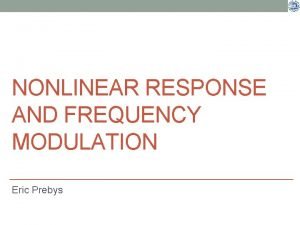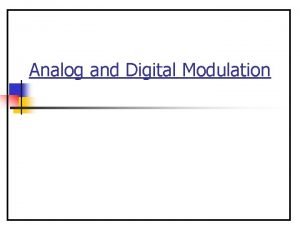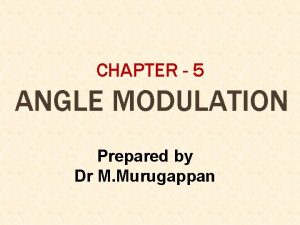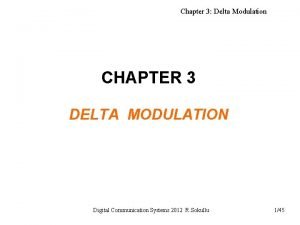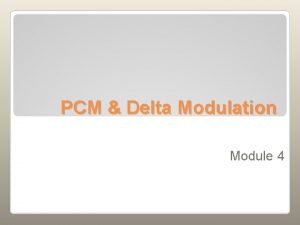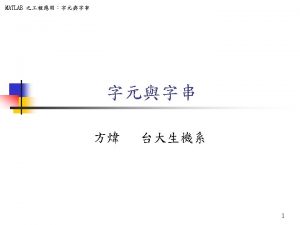DATA COMMUNICATION PRINCIPLES Delta Modulation ASCII American National




- Slides: 4

DATA COMMUNICATION PRINCIPLES : Delta Modulation

ASCII (American National Standard Code for Information Interchange) The ASCII code was laid down for computers with the following characteristics: They use English as the text editing language. They could be used to code not just letters and digits, but also invisible punctuation marks. Computers need to transfer data to other computers across a link or to another device, such as a printer connected directly through the parallel port or across a network. At the time of ASCII specification, it was obvious that all of the characters could be accommodated with 7 -bit codes. There a total of Combinations of 7 bits, giving the potential of 128 codes. This could easily take care of all alphabets, digits and punctuation marks. In fact, it leaves a number of codes to be used for characters that do not have a glyph. Such characters have descriptive name, such as NUL or EOT (end of transmission). The ASCII table is easily available in many books on data communications and on the Internet. Following is an example of ASCII code definition for English language.

The third and sixth columns of Table 3 -4 show the equivalent characters for the same codes in IBM’s Extended Binary Coded Decimal Interchange Code (EBCDIC). The ECBCDIC code (also known as CP 1047) is not identical to ASCII as seen and was primarily designed for file exchange between IBM mainframe computers and terminals. Another difference between the ASCII and EBCDIC is that EBCDIC is by definition an 8 -bit code as compared to the 7 -bit ASCII. Therefore if two computers one using ASCII character set and the other EBCDIC exchange data, there is a need for translating the codes in both directions.

REFERENCES • Ahmad A. - Data Communication Principles. For Fixed and Wireless Networks • Cornelius T. Leondes - Database and Data Communication Network Systems, Three-Volume Set_. . -Academic Press
